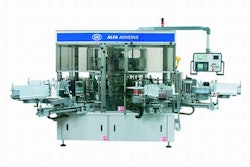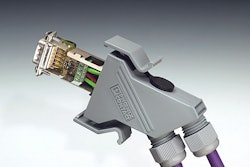Lack of network infrastructure and a lack of packaging data standards were the biggest obstacles to collecting, analyzing, and acting on packaging line data, according to Packaging World’s recent exclusive survey on information integration.
The top complaint was about inaccurate or outright useless data that’s collected manually. Another common complaint was the difficulty in justifying the dollars and engineering resources required to upgrade packaging lines for automated data collection and analysis. Respondents also complained that data is often not used when it’s needed most—in real time to course-correct a packaging line that’s veering out of spec, rather than after a lot of out-of-spec product has been produced. Details are in the charts and verbatim comments that follow.
Obstacles to information integration
We asked survey respondents to elaborate on the specific challenges at their companies in collecting, analyzing, and acting on packaging line data. Here’s what they said:
Lack of integration and standards
Coffee
“Too much manual data collection increases the chance of error. Time involved tracking and correcting errors is significant. Currently, our ERP system does not facilitate data collection from the shop floor, so a stand-alone database is used. The solution is total integration.”
Cosmetics
“Everything is collected by hand, and there is little correlation made between what we have now and what has been done in the past. No computer input, no one person analyzing, no central collection point. We focus on getting what is in front of us out the door and rarely look to improve something that is working. Only emergencies are dealt with.”
Personal care
“Many of our data collection and manufacturing processes are disjointed or disconnected, and it is extremely difficult to share or communicate production data.”
Electronics
“Collection of data interpreted the same from different multinational sites. Lack of standardization in metrics.”
Paper products
“Some of our equipment is not PC/PLC-based, and therefore cannot be programmed or interfaced with the network to provide data. And yet, the equipment is still running and long-since paid for, so it is hard to justify modifying or replacing this equipment.”
Data needs to be real-time
Pharmaceuticals
“Currently data collection is manual and labor-intensive. Once data is collected, it takes time and effort to summarize and gain meaningful insight into the operation. We need real-time data summarized and ready for review. We are investigating options to link machinery and provide real-time data to operators and management.”
Wine
“Data collection systems need to be integrated into existing systems and be capable of withstanding the hostile environment of a wet bottling room. Fill data is analyzed daily for giveaway. The challenge is to get the floor people to identify trends and incorrect settings that can lead to undesirable situations and implement changes quickly during the production run. Continuous training around the use of control charts, process control, and statistical data collection will help in recognition of these situations as people using the statistical process control (SPC) tools understand what the charts are telling them. SPC is most effective during a bottling run.”
Personal care
“For us and our contract manufacturers, the data is not collected frequently enough. Even when it is, most times it is not referred to or analyzed until after the run. When problems arise, they are not usually caught until after the run, leading to a significant quantity of products needing to be culled. It is very inefficient.”
Training and personnel issues
Cosmetics
“Challenge is to train employees in knowing what data to collect, input it into a user friendly system, and then get commitment from management to use data for improvements.”
Beer
“Engineers and maintenance professionals are the only people in the organization currently using it on a routine basis. Too few understand the power behind the data provided, and those few can only do so much at one time.”
Juice
“Traditionaly the data and production numbers have not been shared with the plant-level employees. This climate is changing, but some of the groups are slow to let go of control. Also, in some areas the people who have traditionaly not received the data don’t want that added responsibility of knowing more about the process.”
Paper products
“The information is mainly available to production supervisors who have not been properly trained in how to use the information.”
Collecting and acting on the right data
Food
“Data is currently collected manually, so the only data collected is what’s necessary to satisfy QC requirements. Once collected, it goes into a file somewhere, never having been read or summarized. The data needs to be summarized in useful forms so that line performance can be analyzed to determine where problems are, leading to corrective action.”
Meat
“The data collected is not the most useful. Too much time is wasted collecting information that is not needed. Better decisions could be made if more of the right type of data was collected.”
Tobacco
“Packaging lines consist of 11 lines of 4 to 8 machines each, so the sheer volume of machines makes the data difficult to use. The equipment is also running at speeds in excess of 8ꯠ units per machine per minute and data has to be very quickly analyzed if it is to be acted on.”
Food
“We were initially overwhelmed by the data we collected, but once we eliminated unnecessary data, it became a very useful tool for myself, as a process improvement consultant; engineering, to develop methods for reduction of changeover times, and elimination of waste; purchasing, to ensure we had proper inventory controls in place; and quality assurance, to ensure we could track substandard packaging in case of a recall.”
Vendor evaluations
Paint supplies
“We are striving to build a matrix that would allow a higher value be given to suppliers that provide materials that increase productivity and/or efficiency. Weighting would recognize higher the value of higher-priced materials.”
See sidebar to this article: Methodology


























